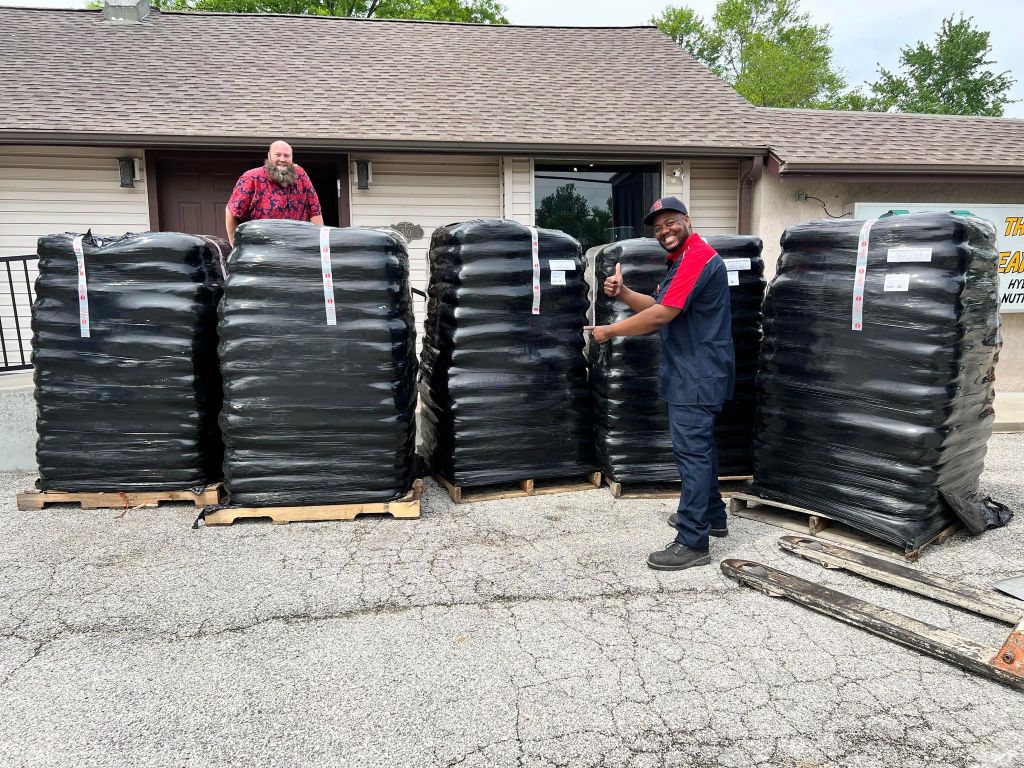The Indoor Earthworm Process: Your Secret to Flourishing Plant Kingdom Through Growing
The Indoor Earthworm Process: Your Secret to Flourishing Plant Kingdom Through Growing
Blog Article
Harnessing the Power of Hydroponics: a Deep Study Utilizes and Different Types
In the realm of modern-day farming, hydroponics has actually become a technique that tests conventional farming techniques by supplying a space-saving and water-efficient option. The application of hydroponic systems opens up a world of possibilities for cultivating plants in diverse settings, ultimately influencing food production and sustainability. As we navigate via the complex landscape of hydroponics, discovering its various kinds and applications, a deeper understanding of its potential to reinvent farming techniques and address international food safety and security worries starts to unfold.
Advantages of Hydroponic Farming
Undoubtedly, the benefits of hydroponic farming are coming to be increasingly acknowledged in modern farming techniques. Hydroponic farming offers countless advantages over traditional soil-based farming. Among the primary benefits is water effectiveness; hydroponic systems utilize up to 90% much less water contrasted to standard farming techniques. This decrease in water use is critical in combating water deficiency problems around the world.
Furthermore, hydroponic farming enables higher control over nutrient levels, resulting in faster plant development and higher returns. By supplying crucial nutrients straight to the plant origins, hydroponic systems promote much healthier and extra robust plant advancement. Furthermore, the regulated environment of hydroponic systems lessens the danger of diseases and pests, reducing the requirement for harmful chemicals and herbicides.

Usual Types of Hydroponic Equipments
Offered the countless advantages of hydroponic farming, it is vital to explore the various common types of hydroponic systems utilized in contemporary agriculture. One common kind is the Deep Water Culture (DWC) system, where plant origins are immersed in a nutrient remedy. One more common system is Nutrient Film Method (NFT), which involves a slim film of nutrient-rich water streaming over the origins - The Indoor Earthworm. The Ebb and Flow system, additionally known as Flooding and Drain, periodically floodings the plant origins with nutrient remedy before draining it. Aeroponics sticks out for its method of putting on hold plant origins in the air and misting them with a nutrient option. Drip systems provide a managed amount of nutrient solution directly to the plant's base. Wick systems, the most basic type of hydroponics, make use of a wick to passively provide nutrient solution to the plant roots. Each of these systems uses one-of-a-kind advantages and provides to various plant types and growth stages in hydroponic farming.
Nutrient Movie Technique (NFT) System

Among the essential benefits of the NFT system is its water performance. The Indoor Earthworm. Since the nutrient service is recirculated in a closed system, this method utilizes substantially much less water compared to conventional dirt farming. In addition, the NFT system is space-efficient, making it suitable for interior farming or in locations with restricted space for conventional agriculture
However, the NFT system requires careful tracking and upkeep to guarantee the continual circulation of water and nutrients. Any kind of disturbance in the flow can swiftly affect plant health and wellness. In general, the NFT system supplies a sustainable and reliable method to expand plants hydroponically, specifically for plants that flourish in well-oxygenated root atmospheres.
Deep Water Culture (DWC) System
Relocating from the Nutrient Film Method (NFT) system, the Deep Water Culture (DWC) system is a hydroponic approach that entails putting on hold plant roots directly in a nutrient solution. Unlike NFT, where roots are constantly subjected to a thin movie of nutrient option, DWC plants have their roots submerged in a reservoir full of oxygenated nutrient water. The origins dangle in the nutrient option, permitting for direct uptake of water and vital nutrients.
One of the crucial advantages of the DWC system is its simpleness and reduced maintenance demands. DWC systems call for appropriate aeration to avoid origin rot and ensure ideal nutrient absorption.
Aeroponic System
A cutting-edge technique in hydroponics growing, the Aeroponic System uses a misting or misting system to supply nutrients straight to plant roots put on hold in the air. This system is recognized for its capability to promote rapid growth and efficient nutrient uptake due to the direct shipment of nutrients to the article source origins, enabling the plant to focus its power on development instead than searching for nutrients.
Among the essential advantages of aeroponics is its water efficiency, as the system uses considerably much less water compared to conventional soil-based cultivation methods. Additionally, the specific delivery of nutrients directly to the origins can result in greater returns and faster development rates. While aeroponics can be a lot more intricate to establish and maintain contrasted to various other hydroponic systems, its potential for raised plant development and efficiency makes it a preferred option for hydroponic enthusiasts and commercial growers seeking optimal outcomes.
Conclusion
In verdict, hydroponic farming provides many advantages and various kinds of systems to select from. The Nutrient Film Method (NFT) system, Deep Water Society (DWC) system, and Aeroponic system are amongst the most common techniques made use of in hydroponics. Each system has its very own advantages and restrictions, making it crucial for farmers to meticulously consider their requirements and preferences prior to picking one of the most appropriate system for their plants.
Unlike various other hydroponic systems where plants are immersed look at this site in a nutrient solution, in the check my reference NFT system, the origins are exposed to the water just in a superficial movie.Moving from the Nutrient Film Strategy (NFT) system, the Deep Water Society (DWC) system is a hydroponic technique that includes putting on hold plant roots directly in a nutrient option.A cutting-edge method in hydroponics cultivation, the Aeroponic System utilizes a misting or fogging system to supply nutrients straight to plant roots suspended in the air. The Nutrient Film Method (NFT) system, Deep Water Culture (DWC) system, and Aeroponic system are among the most common techniques made use of in hydroponics. Each system has its very own advantages and constraints, making it essential for farmers to meticulously consider their requirements and choices before choosing the most suitable system for their crops.
Report this page